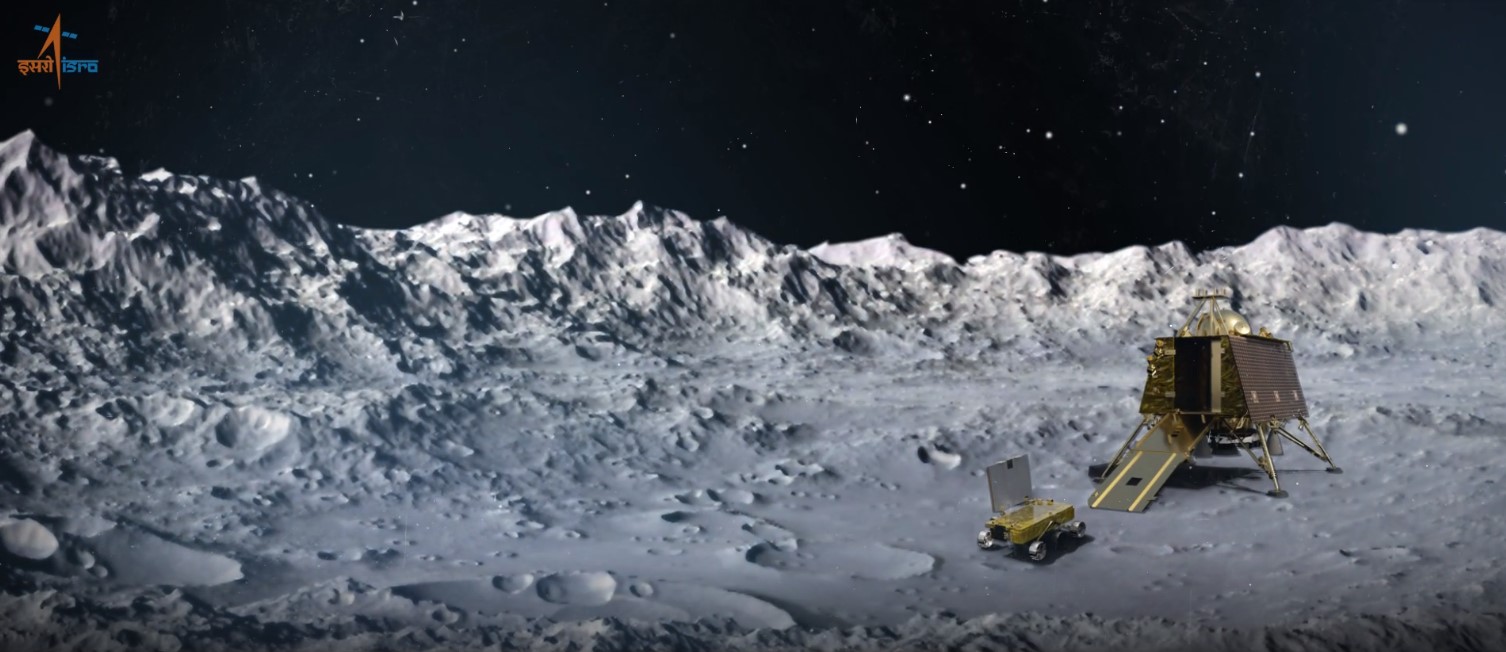Here's Where India's Chandrayaan-2 Will Land Near the Moon's South Pole (and Why)

Update for 5:28 pm ET: ISRO officials lost contact with the Vikram lander during its descent to the lunar surface. Read our full story.
It doesn't have a name, at least not yet. But in just a few days, if all goes well, it could become one of the most important places on the moon's surface.
That spot is a highland that rises between two craters dubbed Manzinus C and Simpelius N. On a grid of the moon's surface, it would fall at 70.9 degrees south latitude and 22.7 degrees east longitude. It's about 375 miles (600 kilometers) from the south pole.
And it's the preferred landing site for India's moon mission, Chandrayaan-2, which is scheduled to touch down on Friday, Sept. 6, between 4 p.m. and 5 p.m. EDT (Sept. 7, between 1:30 a.m. and 2:30 a.m. local time at mission control in India). The Indian Space Research Organisation (ISRO), which oversees the mission, also has a backup site selected, at 67.7 degrees south latitude and 18.4 degrees west longitude.
Related: India's Chandrayaan-2 Mission to the Moon in Photos
Either way, if the landing goes smoothly, the site will become the southernmost spot on the moon to be visited by a spacecraft.
All of NASA's Apollo landing sites, where astronauts explored the surface, are clustered near the equator on the near side, where it's easiest and safest to land. That has skewed scientists' understanding of the samples those astronauts brought back — it's sometimes difficult to tell whether a characteristic appears in all the samples because it is universal in the moon's surface or simply because it happens to prevail in this region.
Get the Space.com Newsletter
Breaking space news, the latest updates on rocket launches, skywatching events and more!
Even China's Chang'e-4 mission, which became the first spacecraft to touch down on the farside of the moon, did so at a latitude of about 45 degrees south.
Choosing different lunar landing sites is important for science not solely in order to build a more complete picture of the moon's geology: The south pole is particularly intriguing. That's where instruments on board this mission's predecessor, the Chandrayaan-1 orbiter, detected slabs of water ice buried in the always-shadowed craters near the moon's south pole.
Chandrayaan-2 is designed to build on that detection, with a mission that cost $150 million, according to Science, the new outlet affiliated with the research journal of the same name. The current project added lander and rover vehicles to the second-generation orbiter.
These two vehicles will touch down just after dawn at the landing site, allowing them to work for about 14 days before the harsh lunar night freezes them. ISRO will attempt to revive the duo when the sun rises again, but the robots weren't designed to survive the night.
The orbiter component of the mission will continue working for about a year, orbiting from pole to pole in order to augment the hoped-for discoveries of the lander and rover.
- Stunning Photos Show Earth from India's Spacecraft Headed to the Moon
- Photos: The Search for Water on the Moon
- India's Chandrayaan-2 Spacecraft Snaps Its First Picture of the Moon
Email Meghan Bartels at mbartels@space.com or follow her @meghanbartels. Follow us on Twitter @Spacedotcom and on Facebook.
Join our Space Forums to keep talking space on the latest missions, night sky and more! And if you have a news tip, correction or comment, let us know at: community@space.com.

Meghan is a senior writer at Space.com and has more than five years' experience as a science journalist based in New York City. She joined Space.com in July 2018, with previous writing published in outlets including Newsweek and Audubon. Meghan earned an MA in science journalism from New York University and a BA in classics from Georgetown University, and in her free time she enjoys reading and visiting museums. Follow her on Twitter at @meghanbartels.









